Dragonflies
Introduction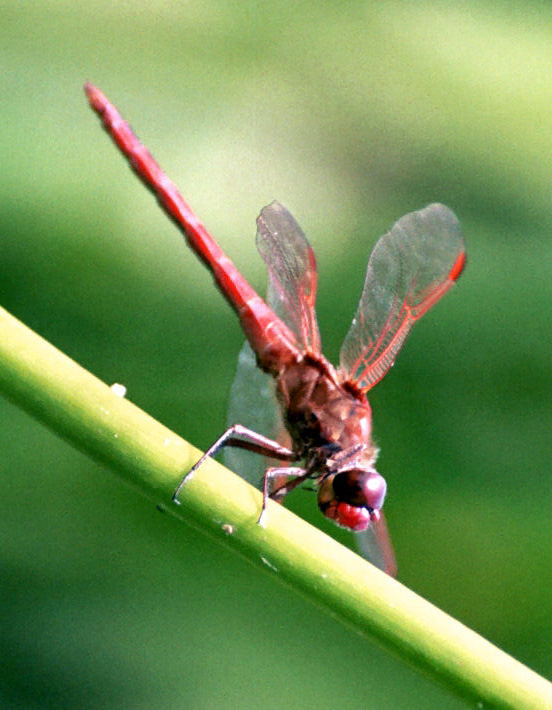 This dragonfly has pink,red, orange and purple colours.Dragonflies are a type of insect.insect. An insect has three parts to its body – head, thoraxthorax and abdomen.abdomen. Insects also have six legs. Some insects, like dragonflies, have wings. Their group is called odonataodonata and they have a cousincousin called a damselfly.damselfly. Like other insects, they are invertebratesinvertebrates because they don’t have a spine. They also have an exoskeleton.exoskeleton. An exoskeleton is a thick coat to protect them. There are over 5000 speciesspecies of dragonflies in the world.
This dragonfly has pink,red, orange and purple colours.Dragonflies are a type of insect.insect. An insect has three parts to its body – head, thoraxthorax and abdomen.abdomen. Insects also have six legs. Some insects, like dragonflies, have wings. Their group is called odonataodonata and they have a cousincousin called a damselfly.damselfly. Like other insects, they are invertebratesinvertebrates because they don’t have a spine. They also have an exoskeleton.exoskeleton. An exoskeleton is a thick coat to protect them. There are over 5000 speciesspecies of dragonflies in the world.
Habitat
Dragonflies live all around the world. They live in warm and cold climates.climates. They live near waterywatery places like rivers, lakes, swamps and ponds.
Appearance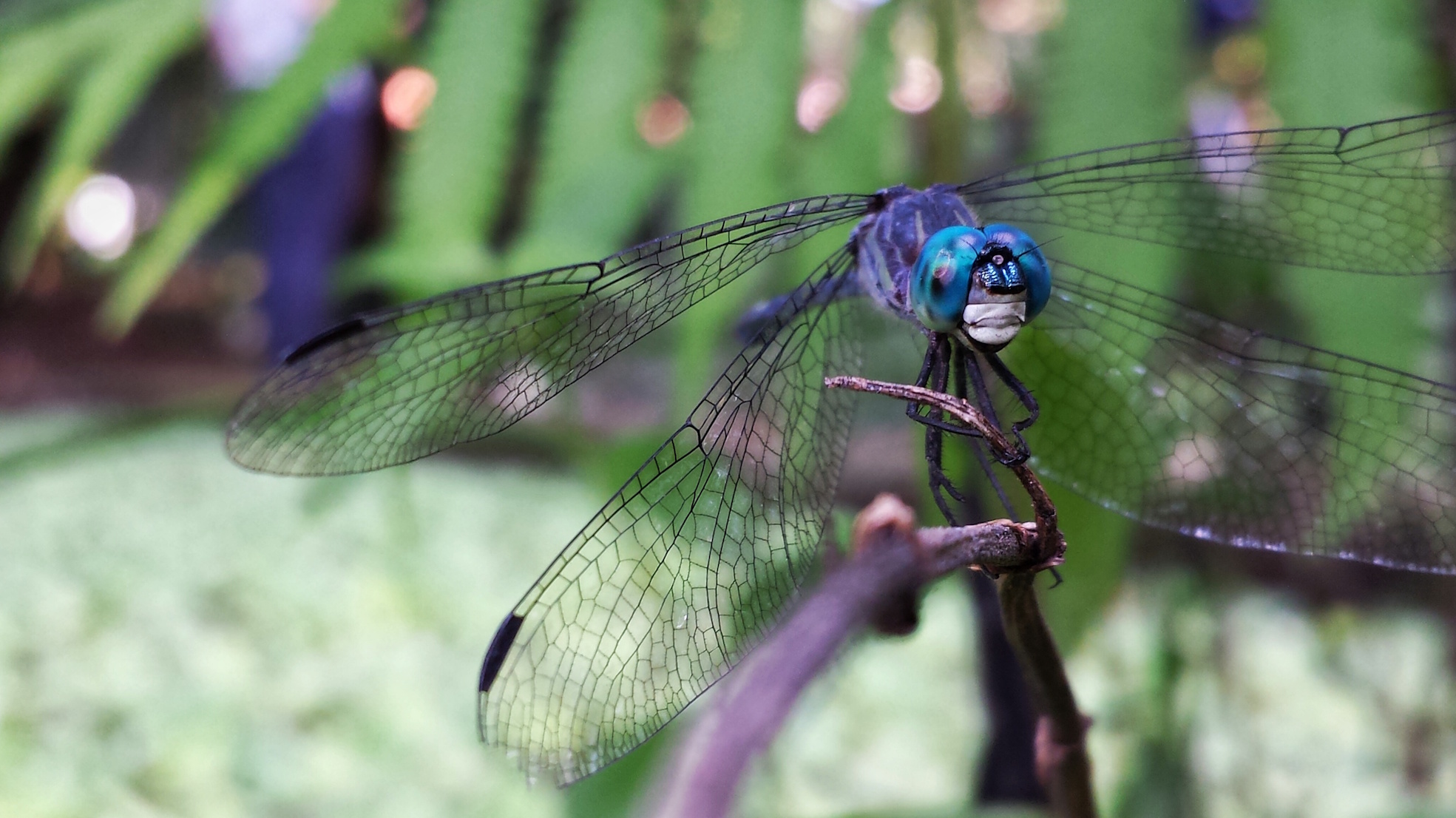 This resting dragonfly's wings are out and it is looking with its two huge compound eyes in every direction.Dragonflies come in differentdifferent colours – like red, yellow, green and blue. On the head they have two big compound eyes. Compound means that there are lots of little eyes inside.inside. They use their mouth parts to chew and bite their food. The thorax has four see-through wings, two on each side, and six jointeded legs coming off it. The musclesmuscles in the thorax move both the wings and legs. To fly well, dragonflies use the segmentssegments in their abdomen to make an arch. The abdomen is coveredcovered in wax which doesn’t let water get in or out. The abdomen digestss the food and storess the eggs. The littlestlittlest dragonflies are 1cm and the biggestbiggest are 12cm long.
This resting dragonfly's wings are out and it is looking with its two huge compound eyes in every direction.Dragonflies come in differentdifferent colours – like red, yellow, green and blue. On the head they have two big compound eyes. Compound means that there are lots of little eyes inside.inside. They use their mouth parts to chew and bite their food. The thorax has four see-through wings, two on each side, and six jointeded legs coming off it. The musclesmuscles in the thorax move both the wings and legs. To fly well, dragonflies use the segmentssegments in their abdomen to make an arch. The abdomen is coveredcovered in wax which doesn’t let water get in or out. The abdomen digestss the food and storess the eggs. The littlestlittlest dragonflies are 1cm and the biggestbiggest are 12cm long.
| Did you know? |
|
Dragonflies don't carry diseases or germs. |
Diet
Dragonflies are carnivores.carnivores. They eat other insects like mosquitoes,mosquitoes, gnats, cicadascicadas and flyflies. They use their legs to make a basketbasket to trap their prey in. They hold on tight and bite them to stop them wrigglewriggling.
Movement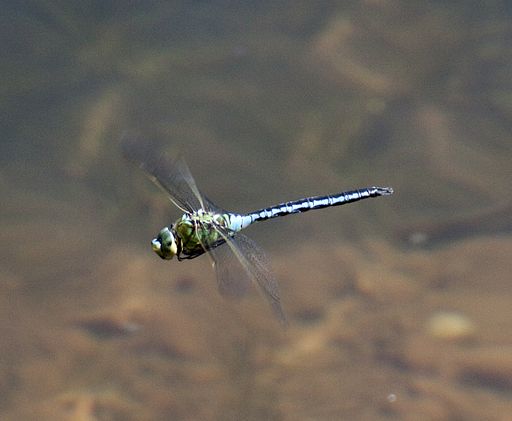 This dragonfly is flying 60kph.Dragonflies don’t walk very well, even though they have six legs. But they are very good flyfliers. They can hoverhover like a helicopter,helicopter, dart like an arrow,arrow, and they can even fly backwards.backwards. The segmentedsegmented abdomen lets it bend and arch to make it a good flier. Their legs are coveredcovered in long, stiff hairs to help them feel the air around them. When they rest, they spread their wings out. In the morning they rest in the sun until they are ready to fly.
This dragonfly is flying 60kph.Dragonflies don’t walk very well, even though they have six legs. But they are very good flyfliers. They can hoverhover like a helicopter,helicopter, dart like an arrow,arrow, and they can even fly backwards.backwards. The segmentedsegmented abdomen lets it bend and arch to make it a good flier. Their legs are coveredcovered in long, stiff hairs to help them feel the air around them. When they rest, they spread their wings out. In the morning they rest in the sun until they are ready to fly.
Life Cycle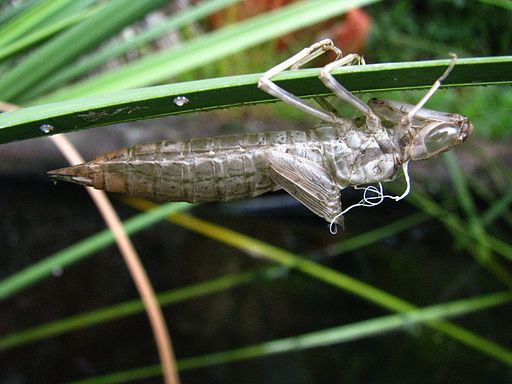 The nymph has left its exoskeleton behind after it has shed for the last time.The adult dragonfly lays eggs in the water. They hatch into nymphs which stay in the water for about one year. They eat tadpoles,tadpoles, maggots,maggots, and tiny fish. BreathingBreathing under water using gills, they squirt out the water againagain very quicklyquickly to move acrossacross the water. Their colour can be brown or green. The nymphs are shortershorter and fatterfatter than the adult dragonfly and their mouth is differentdifferent too. To grow, they shed their exoskeleton. There is a soft baggybaggy exoskeleton Diagram of the Parts of a Dragonfly's Body
The nymph has left its exoskeleton behind after it has shed for the last time.The adult dragonfly lays eggs in the water. They hatch into nymphs which stay in the water for about one year. They eat tadpoles,tadpoles, maggots,maggots, and tiny fish. BreathingBreathing under water using gills, they squirt out the water againagain very quicklyquickly to move acrossacross the water. Their colour can be brown or green. The nymphs are shortershorter and fatterfatter than the adult dragonfly and their mouth is differentdifferent too. To grow, they shed their exoskeleton. There is a soft baggybaggy exoskeleton Diagram of the Parts of a Dragonfly's Body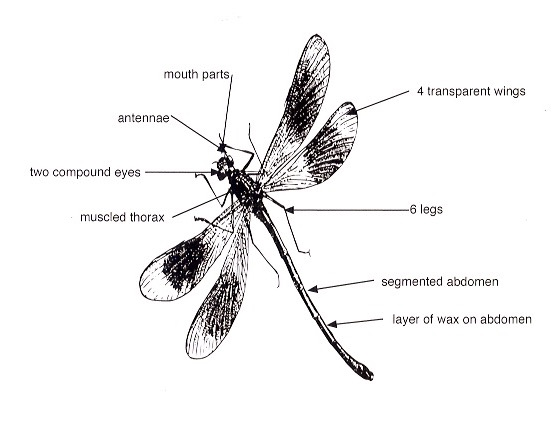 underneath.underneath. They have to wait until the exoskeleton gets hard. During this time, they are changechanging as well as growinggrowing so that when they shed their last skin they are dragonflies! They fly away and live for about a month.
underneath.underneath. They have to wait until the exoskeleton gets hard. During this time, they are changechanging as well as growinggrowing so that when they shed their last skin they are dragonflies! They fly away and live for about a month.
Enemies
Their enemies are fish, ducks, water beetles and birds. Another problemproblem for dragonflies is people. We poison the places where they live by pollutepolluting the water and destroyingdestroying their habitat.
Conclusion
Dragonflies live near water. They are very colourfulcolourful as they fly in the sunlight,sunlight, with their shimmeringshimmering wings and their sparklesparkling reds, yellows, greens and blues. It is amazeamazing that they can fly 60kph. They are fast like a car! Did you know that dragonflies trap their prey in a basket using their legs? Dragonfly nymphs can live for about one year (or even more!) but the adult dragonfly can only live for a month! We should keep them safe by not polluting their habitat because they are such beautybeautiful insects.
Glossary
| arch | something curved | jointed | where parts that move join |
| carnivore | meat eater | maggots | larvae stage of flies - they hatch out of eggs |
| climate | the weather conditions in an area | muscles | tissue that lets animals move |
| digest | break down food | polluting | putting harmful things into an environment |
| gills | the things that let fish breathe underwater | shed | to take off |
| gnat | small biting two-winged flies | species | a kind of living thing |
Bibliography
Mrs Nunweek's Fact File
Bugs Magazine #1, #27, consultant Matthew Robertson, Orbis 1994
By Amy
{chronoconnectivity5}L2L_NF2_Feedback{/chronoconnectivity5}